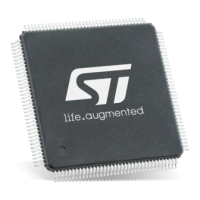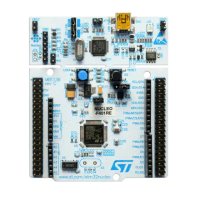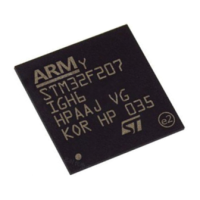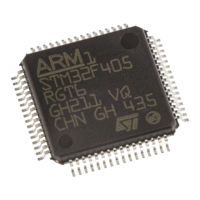PM0215 The STM32 Cortex-M0 processor
Doc ID 022979 Rev 1 15/91
Execution program status register
The EPSR contains the Thumb state bit.
See the register summary in Table 3 on page 12 for the EPSR attributes. The bit
assignments are:
Attempts to read the EPSR directly through application software using the MSR instruction
always return zero. Attempts to write the EPSR using the MSR instruction in application
software are ignored. Fault handlers can examine EPSR value in the stacked PSR to
indicate the operation that is at fault. See Section 2.3.6: Exception entry and return on
page 25.
The following can clear the T bit to 0:
● instructions BLX, BX and POP{PC}
● restoration from the stacked xPSR value on an exception return
● bit[0] of the vector value on an exception entry.
Attempting to execute instructions when the T bit is 0 results in a HardFault or lockup. See
Lockup on page 28 for more information.
Interruptable-restartable instructions
LDM and STM are interruptable-restartable instructions. If an interrupt occurs during the
execution of one of these instructions, the processor abandons execution of the instruction.
After servicing the interrupt, the processor restarts execution of the instruction from the
beginning.
Exception mask registers
The exception mask registers disable the handling of exceptions by the processor. Disable
exceptions where they might impact on timing critical tasks or code sequences.
To disable or re-enable exceptions use the MSR and MRS instructions, or the CPS
instruction to change the value of PRIMASK. See MRS on page 64, MSR on page 65, and
CPSID CPSIE on page 62 for more information.
Priority mask register
The PRIMASK register prevents activation of all exceptions with configurable priority. See
the register summary in Table 3 on page 12 for its attributes.
Figure 4. PRIMASK register bit assignments
Table 7. EPSR bit definitions
Bits Description
Bits 31:25 Reserved.
Bit 24 T: Thumb state bit.
Bits 23:0 Reserved.
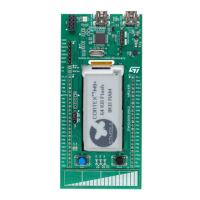
